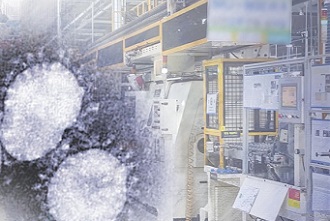Last year’s industrial production, which was hit by a novel coronavirus infection (Corona 19), declined compared to the previous year for the first time since the statistics were compiled.
According to the’December 2020 and Annual Industrial Activity Trends’ released by the National Statistical Office on the 29th, last year’s total industrial production (raw index, excluding agriculture, forestry and fisheries) decreased 0.8% from the previous year.
This is the first time since the year 2000, when statistics began to be prepared, all industrial production has taken a step back.
Mining and industrial production, including manufacturing, increased 0.4%, but the service production decreased 2.0%.
Retail sales, showing consumption trends, declined 0.2%. This is the largest decline since 2003 (-3.1%).
Facility investment increased by 6.0%.
“The production of the face-to-face service industry has greatly decreased due to the impact of Corona 19,” said Kim Bo-kyung, head of the Industry Trend Division at Statistics Korea.
Both production and consumption declined in the year last year, which was widely affected by Corona 19, but in December, production, consumption, and investment recorded a’triple increase’.
In December of last year, all industrial production (seasonal adjustment index, excluding agriculture, forestry and fisheries) increased by 0.5%. The increase was slower than in November (0.8%).
As manufacturing output increased by 3.7%, mining production also increased by 3.7%. The mining industry production in November was 0.3%.
However, production in the service industry declined 1.1%. It is a negative (-) conversion in 4 months since August (-1.9%).
Retail sales increased 0.2%, breaking the decline that continued for two consecutive months in October (-1.9%) and November (-0.9%).
Facility investment increased by 0.9%.
The cyclical fluctuation of the coincident index indicating the future economy remained unchanged from the previous month. It rose for six consecutive months, but remained flat in December.
The cyclical fluctuation of the leading index, which predicts the future economy, rose 0.5 points for seven consecutive months. It is the longest consecutive increase since it rose for 9 consecutive months from November 2016 to July 2017.
Manager Kim said, “After the re-proliferation of Corona 19 and social distancing, the service industry has declined, but as the semiconductor economy showed good performance, the mining industry increased relatively largely, resulting in an increase in all industrial production.” “The base effect of the company and the increase in consumption of food and beverages have had an impact,” he said.
Reporter Yoon Se-hoon [email protected]
<저작권자 © 전파신문, 무단 전재 및 재배포 금지>
